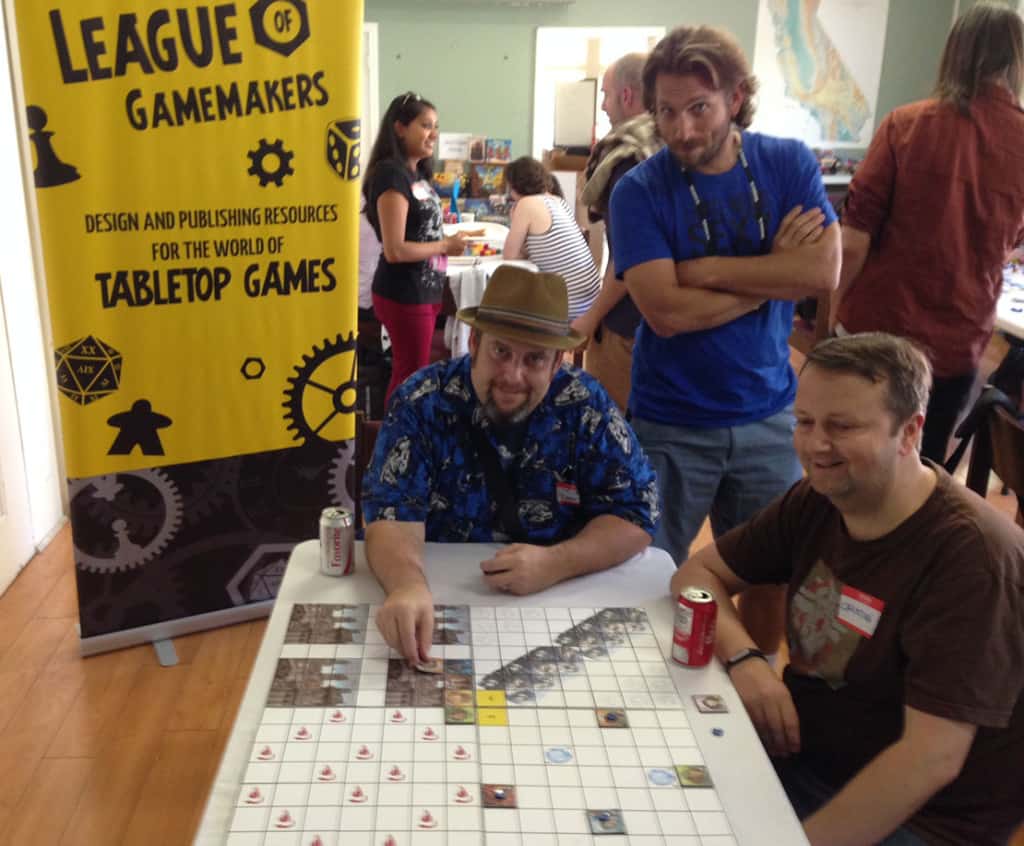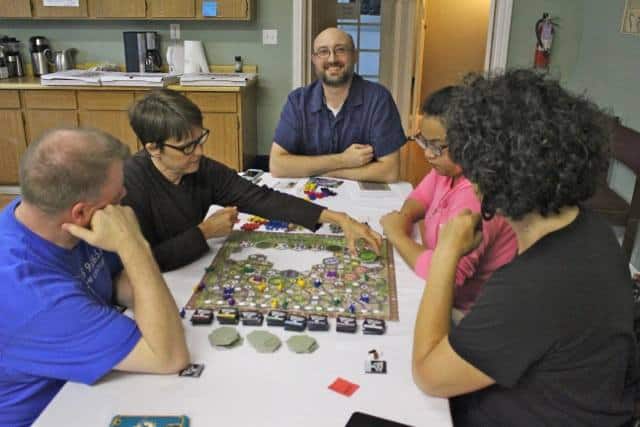
Maybe you’ve wondered:
HOW MANY TIMES DO I NEED TO PLAYTEST MY GAME BEFORE IT’S READY TO SUBMIT TO A PUBLISHER?
Is there a magic number of playtests to aim for? I like to aim for at least 30 playtests. 30 is considered a minimum population size in statistics, so that seems like a good place to start. However, here are three approaches for figuring out how many times you need to playtest your game before its ready:
- Test Plan Approach
- People Approach
- Goal Approach
You will probably want to use some combination of the approaches for your game.

TEST PLAN APPROACH
Maybe it’s my background in software development, but it’s really easy for me to approach my game as if it were a piece of software that needs to be tested. In software testing, you want to make sure every line of code gets executed in every possible state. What does that mean for a board game?
- Make sure every element of the game gets played which could mean every card, every faction, or every special power. It’s OK to stack the deck before a playtest starts to make sure a certain card appears. It’s OK to force your playtesters to play with certain factions as opposed to being able to choose a faction freely.
- Besides just testing every element, you may also want to consider testing every element at different times in the game. Certain cards or powers may be more powerful early or later in the game.
- If your game has a lot of setup variability (different player powers, different modular boards, different factions, etc.) you should try to cover as many of the different possible setup combinations as possible. That sounds like a lot of playtests and you may need to do a hundred playtests to make sure certain elements are balanced.
CHANCES ARE NOT ALL SETUP POSSIBILITIES ARE SIGNIFICANTLY DIFFERENT.
You can limit your playtests to a subset of setup combinations that are the most significantly different from each other. The more you play your game, the more you can recognize which setup combinations are likely to be the most diverse from each other.
- Besides just testing significantly different setup combinations, you should also playtest these setup combinations with different player counts. Certain setup combinations might work better or worse with low or higher player counts.
- Speaking of player counts, you should definitely make sure you cover the lowest player count for your game, which may be for 2 players. It’s well known that market/auction/bidding/deduction don’t always work for 2 players. In some games, the amount of available options/play spaces/resources is based on the number of players. Maybe these options are too limiting for only 2 players?
- On the flip side, make sure you cover the highest player count for your game. It’s well known that games can suffer down time and extra chaos at higher player counts. How does your game fare?
Once you have your test plan, you can figure out the minimum number of playtest needed to cover all cases in your test plan.
PEOPLE APPROACH
In this approach, instead of focusing on your game and its rules, you focus on the players playing your game. Which players do you need?
THE OBVIOUS:
- Yourself: As many have said, usually your first few playtests are with yourself as you check to see if you have a game worth playtesting further.
- Your friends and family: I call these friendly playtests. There’s nothing wrong with starting in a supportive environment. You can see if your game is generating any excitement among the people you know well.
- People you don’t know: I call these unfriendly playtests. These might be people at a convention. These are people who don’t necessarily like you. Strangers can definitely provide a more unbiased look at your game.
THE LESS OBVIOUS:
- Your target market: If your game is for kids, you should play with kids, a lot of different kids. If you think your game is a family game, you should try to have families play your game. If your game is for couples, you should try to get couples to play your game. Most of your playtests should be with your target market. What if you don’t know the target market for your game? In that case, you should try to figure that out. It will definitely help you sell your game to publishers.
- Repeat players:
IF YOU ARE DESIGNING A STRATEGY GAME, YOU REALLY SHOULD FIND A GROUP OF PLAYTESTERS WHO WILL AGREE TO PLAYTEST YOUR GAME 10+ TIMES.
In this way, you can really find out about the long term play value of your game. Do your playtesters lose interest after 5 games? Does the game start to feel played out or solvable? It’s hard to observe these sorts of problems if you only playtest with new players.
- The experts: From my point of view, there are two kinds of experts: mechanics experts and theme experts. For mechanics experts, seek out people who really know and love your style of game well. For example, if you are designing a word game, seek out the person who has played Scrabble for 25 years, or the person who owns and plays 30 different words games regularly. For theme experts, seek out people who really know and love your theme. For example, if you are designing a game about being a policeman, seek out policemen to play your game. They will have a unique perspective on your game. Likewise, if you are designing a game about Japanese culture, it would be interesting to have Japanese people play your game to make sure you are getting the Japanese culture part right. You certainly don’t want to make a game that is inadvertently offensive or insensitive to a particular culture.
Just like in the test plan approach, you need to figure out how many playtests you need to cover all of these various people.
GOAL APPROACH
In the final approach, you want to keep playtesting your game until you reach one or more goals. Here are some common goals.
- People Want To Buy This Game: Assuming you want to publish the game, you want to keep playtesting your game until friends and strangers tell you they would like to purchase a copy of the game when it is available. It’s not enough for a playtester to say they like the game or that they enjoyed it. Your game needs to be so good, some portion (at least 1 at the table) of the playtesters would buy the game if available. If it’s unclear where someone stands, it’s OK to ask them directly, would you buy this game if it were available?
- The Game Is Balanced: If your game has multiple paths to victory, you want to keep playtesting until these multiple strategies are balanced. How do you know? The best way would be to keep statistics and keep track of scores. See if there is any correlation between the final scores and the strategies used to get those scores.
- The Game is the Right Length: Maybe you want your game to be playable in a 60 minutes, but it’s taking 90 minutes on average. Maybe you are looking for a game to take enough time so that players can enjoy the engines they build up. Game length can make a big difference on how people think about their game experience. If it felt too long or too short, players may walk away unsatisfied. You can approach game length in two ways. Either you need to modify the number of turns or you need to modify how long each of those turns takes. If a game has a variable end condition, you can try adding elements in the game that make players more and more likely to achieve that end condition. Or, you can add additional end conditions.
Hopefully, you find these tips helpful. What advice did I miss? How do you figure out how many playtests you need for a game? I look forward to hearing your thoughts.








